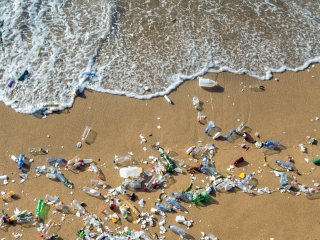Impacts of Plastic Pollution

Plastic pollution has become ubiquitous in natural and built environments, raising concerns about potential harm to humans and nature alike. Once in the environment, research shows that plastic pollution is persistent and may take between 100 to 1,000 years or more to decompose, depending on environmental conditions.
Once in the environment, plastic pollution can fragment into smaller pieces of plastic. Microplastics are plastic particles ranging in size from five millimeters to one nanometer; nanoplastics are plastic particles smaller than one micrometer. Both are found in every ecosystem on the planet from the Antarctic tundra to tropical coral reefs.
On this page:
Environmental Impacts

Plastic pollution poses a threat to the marine environment. It puts marine species at higher risk of ingesting plastic, suffocating, or becoming entangled in plastic pollution. Research indicates that more than 1,500 species in marine and terrestrial environments are known to ingest plastics.
The Organization for Economic Cooperation and Development estimated that in 2019, plastic products were responsible for 3.4% of global greenhouse gas emissions throughout their life cycles, with 90% of these emissions coming from the production and conversion of fossil fuels into new plastic products. OECD also reports that, unless human behavior changes, greenhouse gas emissions associated with the life cycle of plastic products are expected to double by 2060. The World Economic Forum projects that without intervention, the global plastics industry will account for 20% of total oil consumption and up to 15% of global carbon emissions by 2050.
Human Health Impacts
According to the United Nations Environment Programme, microplastics have also been found in human livers, kidneys, and placentas. Additionally, the International Union for Conservation of Nature (pdf)(291 KB) finds that carcinogenic chemicals found in plastic products can leach into tap water, which may cause developmental, reproductive, neurological, and immune disorders. Some animal studies have raised similar concerns about endocrine-disrupting effects. More research is needed to better understand the potential human health impact of microplastics.
